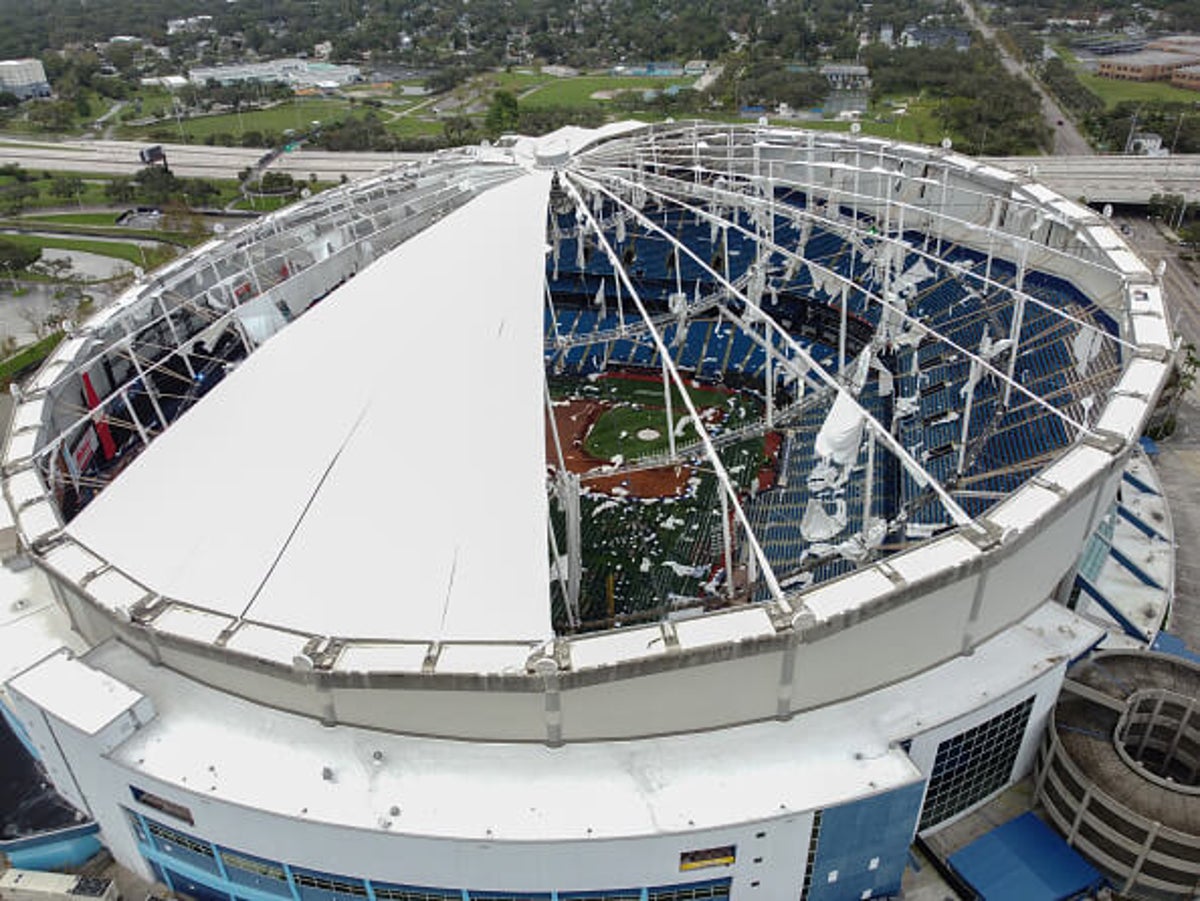LOS ANGELES — Major League Baseball and the Players Association just worked through the last remaining big-ticket item for the A’s move to Sacramento, a playing surface to combat the heat: MLB is going with grass, not turf as it originally planned. Now the two parties can go through a whole new checklist once MLB picks a location for the Tampa Bay Rays to play.
Opening Day 2025 will feature the odd circumstance of not one but two MLB teams using an atypical facility needing modifications for big-league use. The A’s are planning to share the home of the Triple-A Sacramento River Cats for at least three seasons, until they move to Las Vegas in 2028 at the earliest. But much less is known about what the Rays will do. Their regular park, Tropicana Field in St. Petersburg, Fla., was significantly damaged during Hurricane Milton, and it’s going to be unplayable at least for the start of the year, and perhaps the whole season or longer.
MLB is focused on the immediate need — a home for 2025 — and the league’s preference is for the Rays to stay in Florida, where there is no shortage of spring training and minor-league facilities to choose from. Two possibilities are Steinbrenner Field, the Yankees’ spring training facility, in Tampa, and the old spring training home of the Atlanta Braves in Kissimmee, at Disney’s Wide World of Sports complex.
But the league has considered basically everything imaginable, including faraway spots. Per a person briefed on the discussions, it is unlikely that the Rays would begin in 2025 in a city that is considered a prime destination for an eventual expansion franchise. That means Nashville and Salt Lake City are doubtful.
“I think everything is still on the table in regards to time frame, both near term and long term,” Tony Clark, head of the players’ union, said Friday before Game 1 of the World Series. “I haven’t heard anything definitive, formally, from the league at this point. So it’s hard to say.”
The Rays were already planning to open a new stadium in St. Petersburg in 2028, but Tropicana Field, an older facility, would be expensive to repair even for 2026 or 2027.
“The plan is to have a new ballpark there,” Clark said. “What happens now, between now and then, first off is going to be the 2025 season. We’ll have to address that, then move forward based on what that looks like, and what considerations tied to the existing ballpark can be made between now and 2026.
An aerial view of Tropicana Field from Oct. 10 shows the damage sustained from Hurricane Milton. (Joe Raedle / Getty Images)
“There are options out there, some of which have been bantered about publicly, some not so much that will have to be reviewed, and we’ll have to ensure that they’re of a standard that is major-league standard,” Clark said.
The A’s and Rays have always been linked because of their years-long quests to get new stadiums built. It’s an oddity that the Rays would now be the team to join the A’s in an itinerant existence.
“Yes, it is coincidental perhaps that we find ourselves in a world where those two locations are as challenged as they are at the moment,” Clark said. “But suffice it to say, wherever the players are in 2025, we will have a seat at the table to ensure that, to the best we can, those standards are up to speed. … It would be ideal to have all 30 teams settled in a major-league ballpark yesterday.”
The MLBPA does not technically have a say in what facility MLB chooses to use.
“We do not have a hand in the facility. We don’t have a hand in the move,” Clark said. “We have a hand in what’s called effects bargaining: How are players affected by the league’s decision? At the end of the day, if the decision puts players in harm’s way, it depends on what harm’s way means.”
Clark said in “a last resort,” the union could file a grievance. The situation in Sacramento, where players felt strongly that a turf field would be too hot, did not reach that point, however.
“The very real possibility of playing on a surface that hot, that often, was going to prove challenging from a health and safety standpoint,” Clark said. “Took a little while to get there, but we got there, and now we’re in a world where we’ll make the best of the situation where that grass will take a lot of beating during the course of the year, and we’ll adjust accordingly.
“We didn’t get to the point where we contemplated filing a grievance. We just had dialogue in regards to what we thought made the most sense, and offered the player feedback as a result. So we worked through it. … You don’t start a conversation by looking to have that conversation (about a grievance), and you don’t offer that as a ploy to try to get to where you’d like to get to. You sit down and you have a professional conversation, and you run through all of the data points and information that each side has, and you hope that you can find common ground.”
With two teams playing at Sacramento’s Sutter Health Park — both the A’s and the San Francisco Giants’ Triple-A club, the River Cats — turf likely would have been the most durable option. In its place, grass will be cooler, but require significant upkeep.
“Grass brings a different level of challenge,” Clark said.
(Top photo: Bryan R. Smith / AFP via Getty Images)

